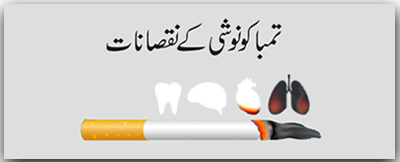Stop Using Tobacco
Protect Your Health, Say No to Tobacco!
Tobacco use is a leading cause of preventable diseases and deaths worldwide. According to the World Health Organization (WHO), tobacco kills up to half of its users who do not quit.
Various factors contribute to tobacco use. Some people smoke to alleviate stress and anxiety, while others do it to fit in or appear cool. While we all have our reasons for smoking, there is a hidden cost that we often overlook: the devastating impact on our health and well-being. In Pakistan, nearly 35% of males and 7% of females smoke.
The Alarming Reality of Tobacco Use:
Do you know smokers are at a significantly higher risk of developing oral cancer?
In Pakistan, tobacco-related cancers are alarmingly prevalent. Lip, oral cavity, and lung cancers are among the leading cancers in men. After breast cancer, oral and lung cancers are the most common types of cancers in the country, underscoring the urgent need for tobacco control.
Research highlights that nearly 40% of cancers in adult males seen at SKMCH&RC can be linked to the use of tobacco, while 160,000 people die from tobacco-related cases annually in Pakistan.
You can donate now and play your part in helping deserving cancer patients get the care they deserve at Shaukat Khanum Hospitals. Your generosity can make a significant difference in the lives of cancer patients.
Deposit Cash, Cheque or Bank Draft | Direct Bank Transfer
For home collection of donation, call now at 0800 11 555 or WhatsApp at 03000 666 363.
At Shaukat Khanum Memorial Cancer Hospital and Research Centres, we are dedicated to raising awareness about the severe health risks associated with tobacco use and encouraging a tobacco-free lifestyle. Our campuses have been established as no-tobacco zones with stringent policies.
This year, pledge with us to empower yourself to stop tobacco consumption. Don’t let tobacco destroy your life. Stop using tobacco in all its forms.
Steps to Quit Tobacco:
- Know why you want to quit.
- Finalise a quit date.
- Make a quit journal.
- Identify trigger situations.
- Use relaxation techniques/ therapy to manage urges and cravings.
- Recognize the achievement and celebrate.




